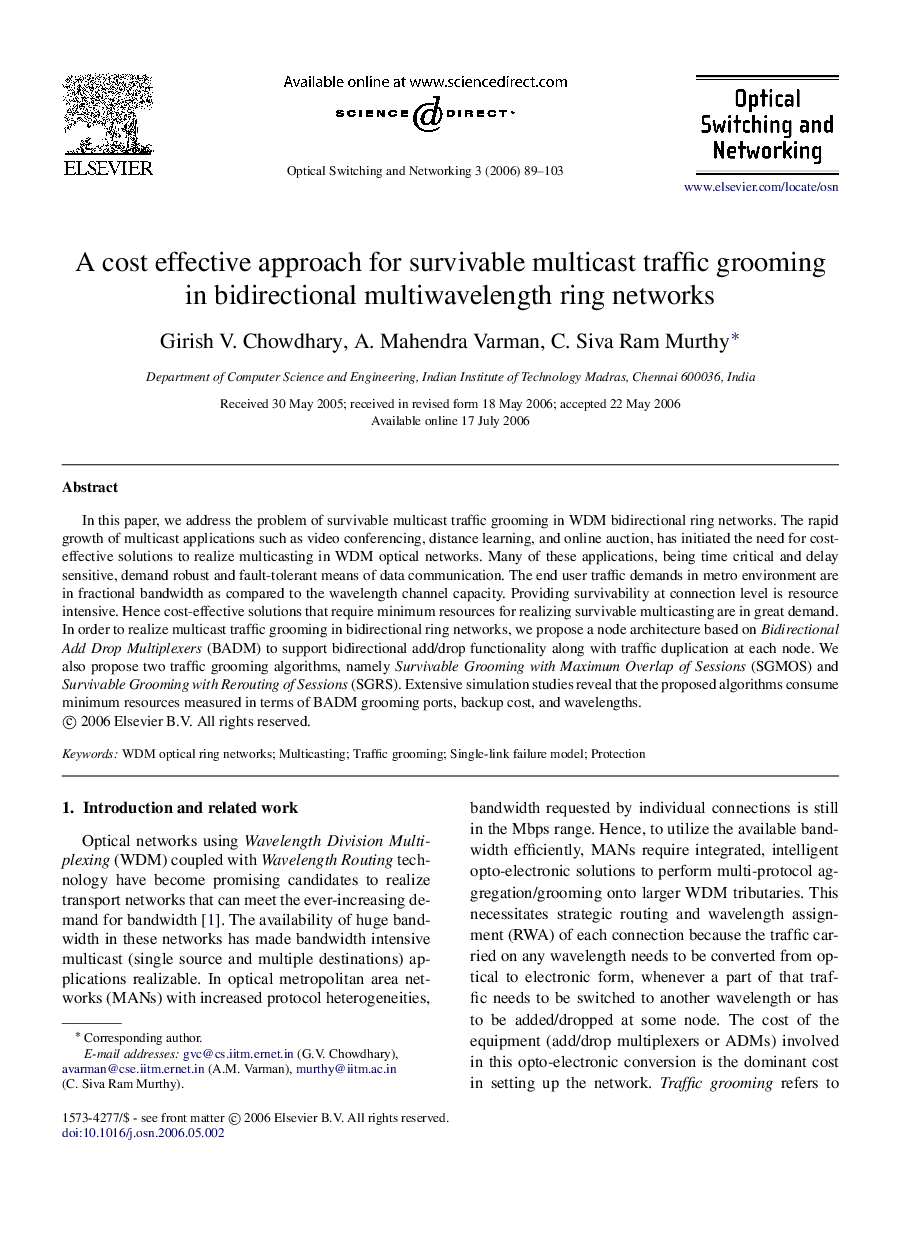| Article ID | Journal | Published Year | Pages | File Type |
|---|---|---|---|---|
| 465031 | Optical Switching and Networking | 2006 | 15 Pages |
In this paper, we address the problem of survivable multicast traffic grooming in WDM bidirectional ring networks. The rapid growth of multicast applications such as video conferencing, distance learning, and online auction, has initiated the need for cost-effective solutions to realize multicasting in WDM optical networks. Many of these applications, being time critical and delay sensitive, demand robust and fault-tolerant means of data communication. The end user traffic demands in metro environment are in fractional bandwidth as compared to the wavelength channel capacity. Providing survivability at connection level is resource intensive. Hence cost-effective solutions that require minimum resources for realizing survivable multicasting are in great demand. In order to realize multicast traffic grooming in bidirectional ring networks, we propose a node architecture based on Bidirectional Add Drop Multiplexers (BADM) to support bidirectional add/drop functionality along with traffic duplication at each node. We also propose two traffic grooming algorithms, namely Survivable Grooming with Maximum Overlap of Sessions (SGMOS) and Survivable Grooming with Rerouting of Sessions (SGRS). Extensive simulation studies reveal that the proposed algorithms consume minimum resources measured in terms of BADM grooming ports, backup cost, and wavelengths.
